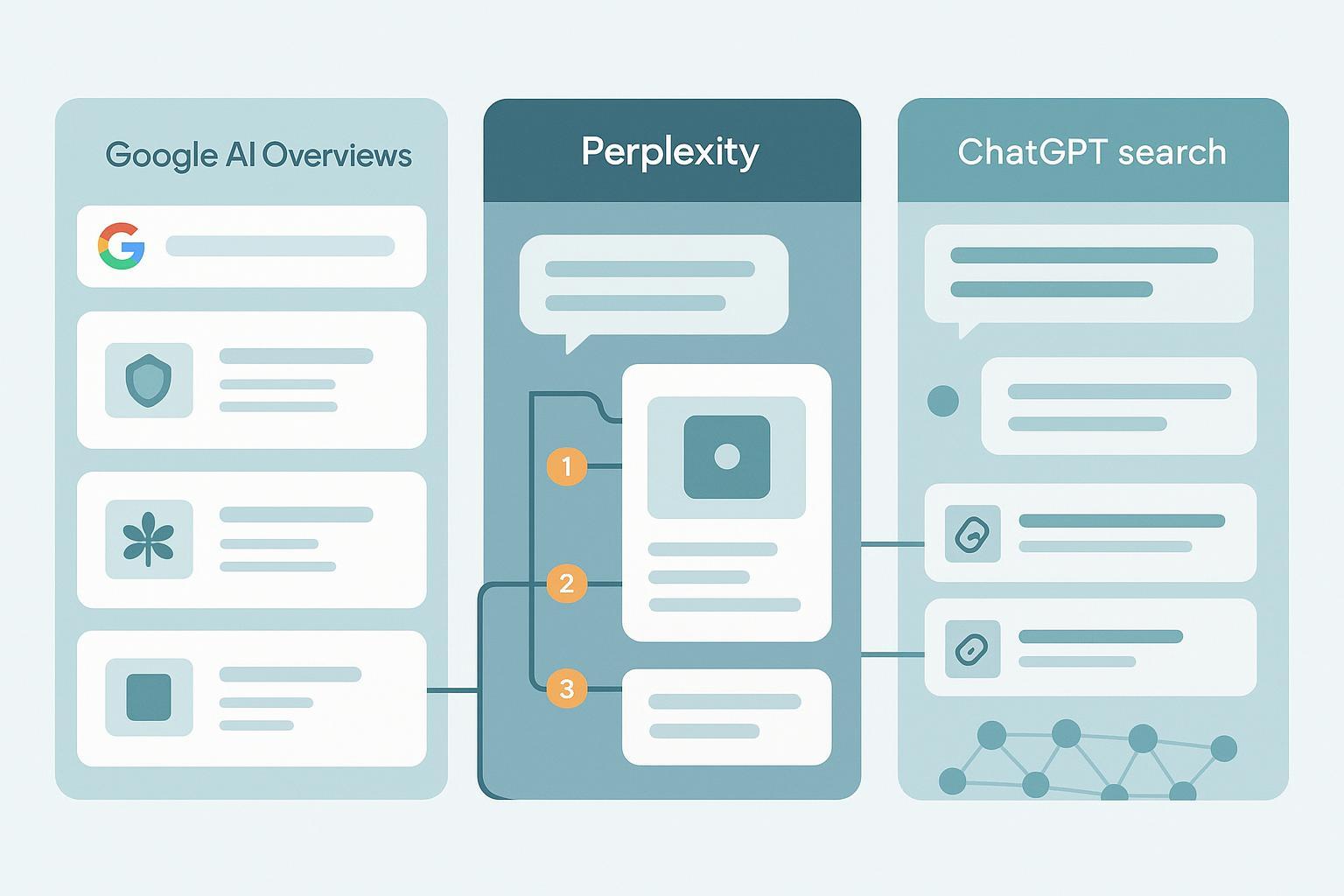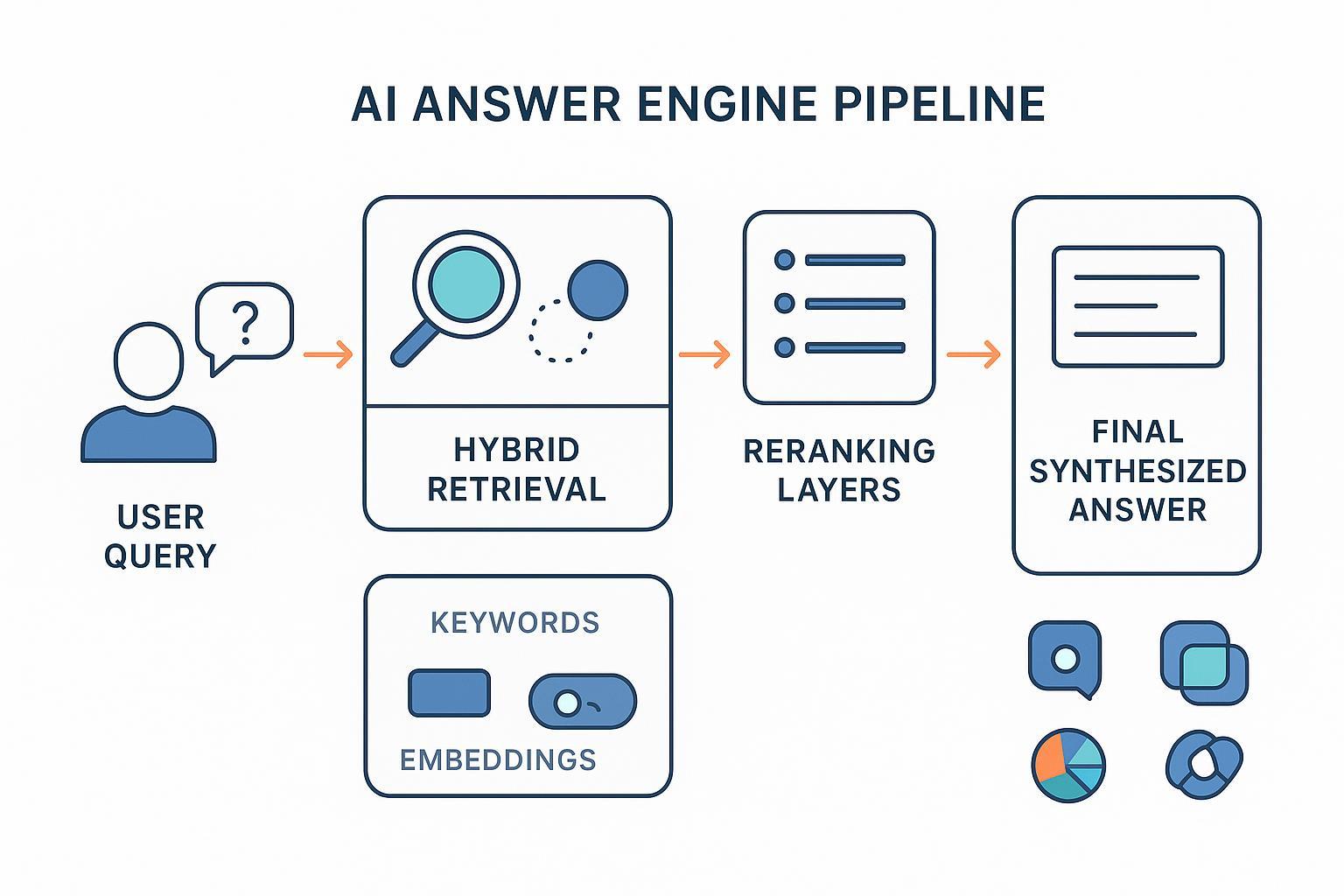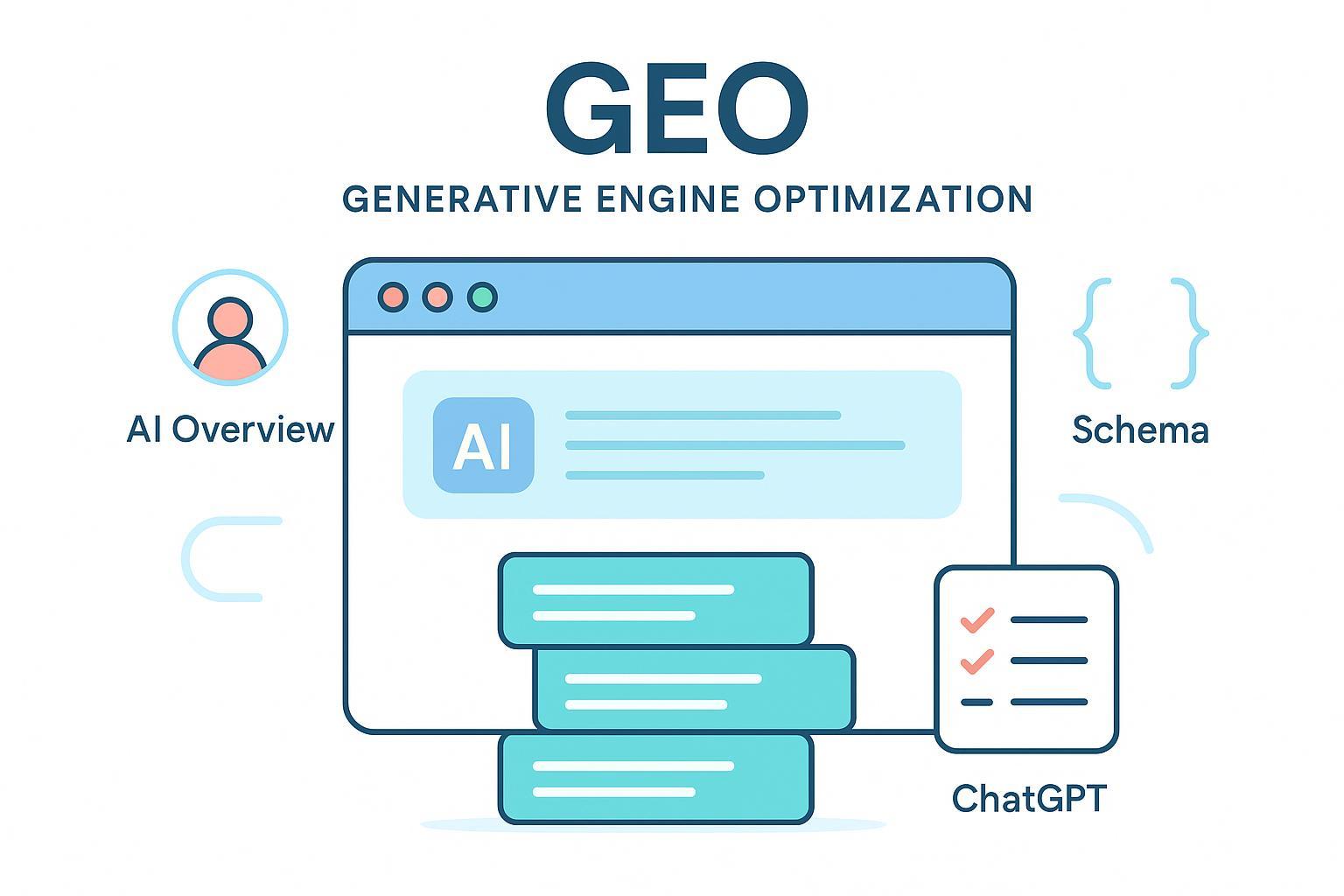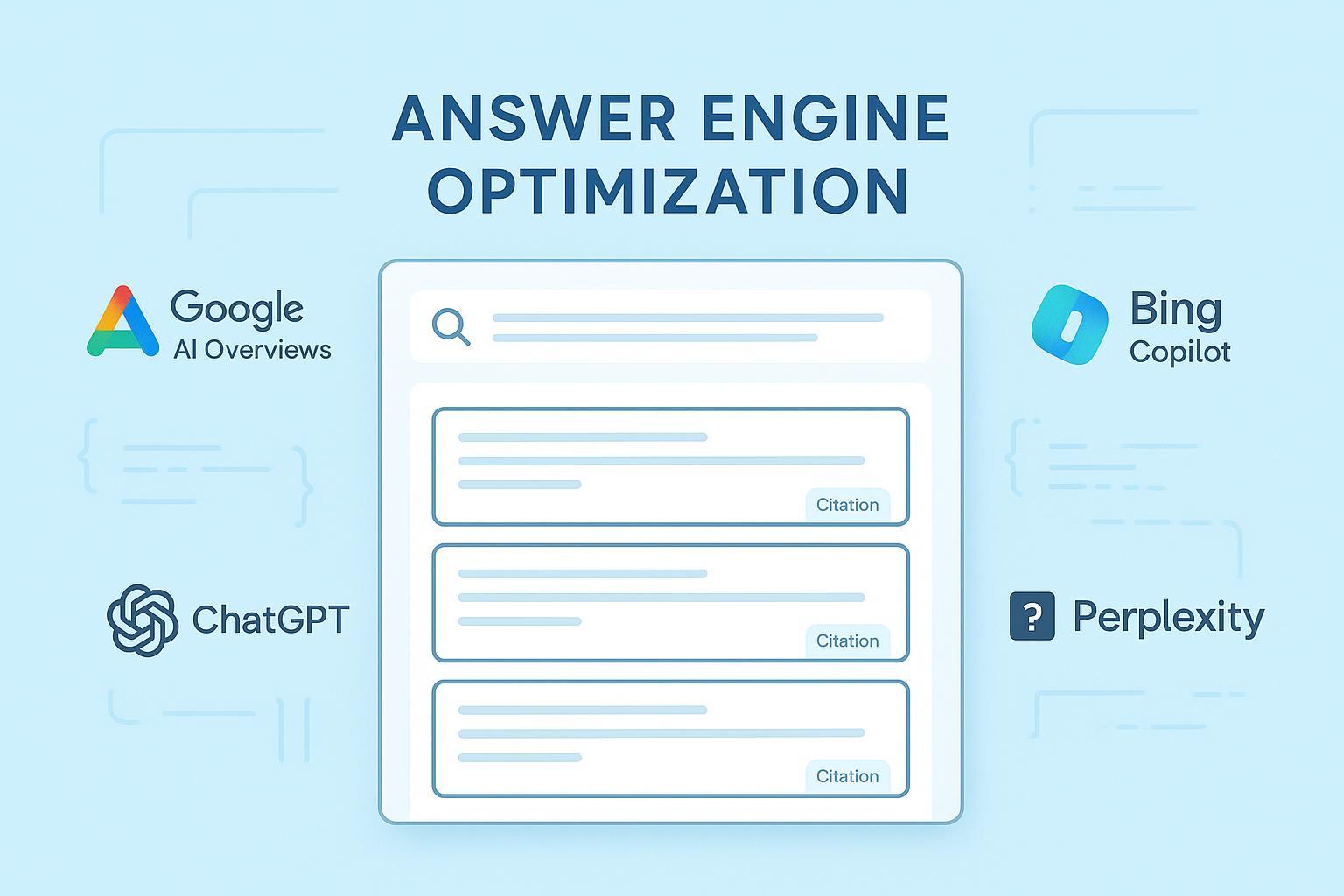Agentic Search 2025: How Autonomous Assistants Change User Behavior
Discover how agentic search in 2025 is transforming user behavior—less clicks, more completions. Dive into the latest trends and readiness steps.

Updated on 2025-10-01
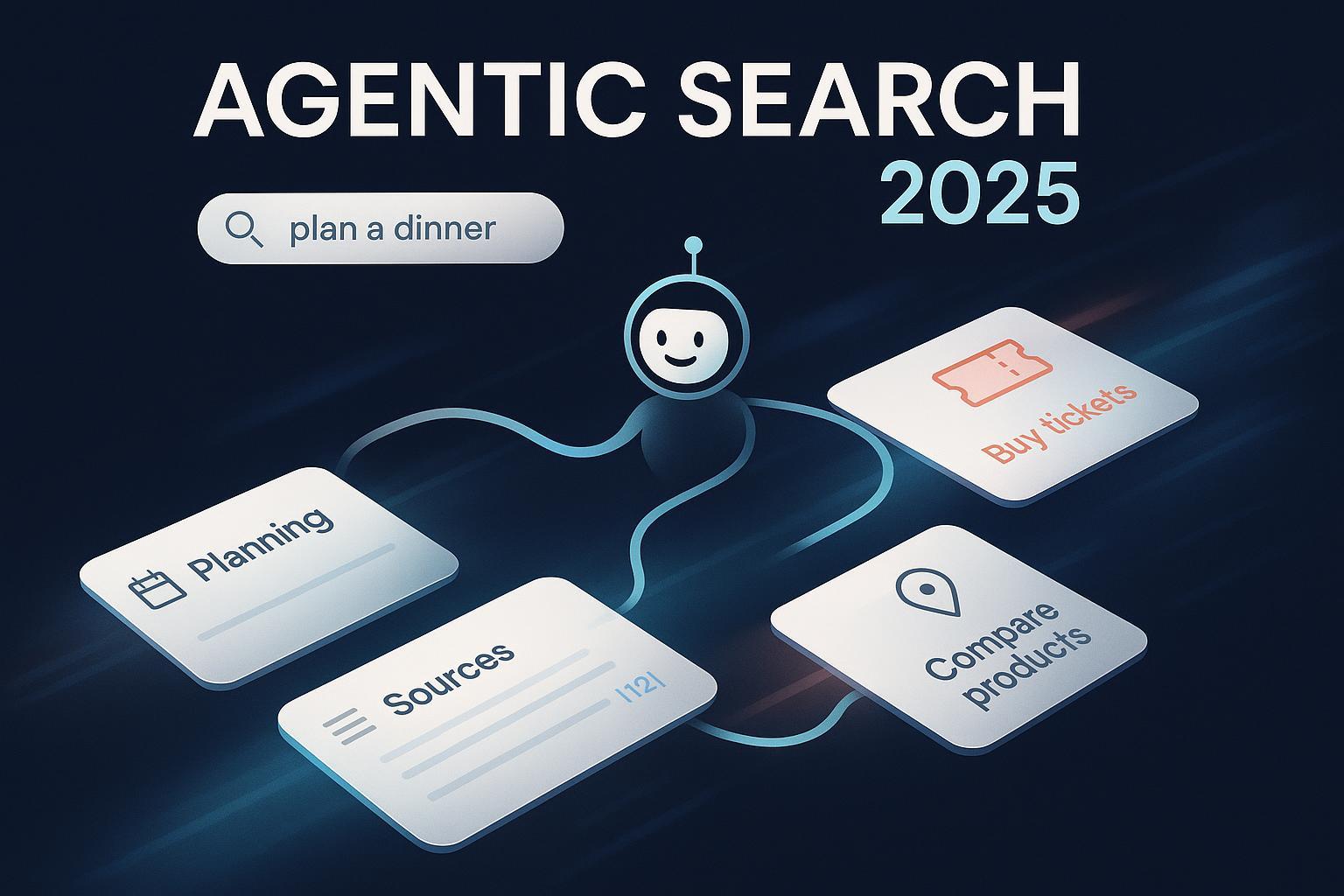
Why this is the moment for agentic search
A year ago, “search” mostly meant typing a query and choosing a link. In 2025, agents can interpret your intent, plan multi-step tasks, retrieve and synthesize evidence, and even hand off to a booking or checkout flow—all inside the search or assistant experience. That shift is not hype; it’s a concrete change in how users get things done online. For brands, the optimization target is moving from ranking pages to enabling tasks and being chosen by agents.
This piece explains what changed in 2025, how behavior is shifting, and what brands should do next—spanning technical readiness (APIs, schemas, identity/auth), measurement (citations, sentiment, task completion), and governance.
What actually changed in 2025
- Google folded transactional “agentic” steps into AI experiences. The company describes “new agentic capabilities in AI Mode” that can find tables and link to booking pages, with partners like OpenTable, Resy, Tock, Ticketmaster, StubHub, SeatGeek, and Booksy in the 2025 rollout, per the Google Search team’s own announcement in 2025 (Google Search blog on AI Mode partners and bookings).
- Microsoft introduced agentic retrieval as a first-class pattern for Copilot-style apps. In 2025 documentation, Microsoft explains how an LLM plans sub-queries, executes them in parallel across Azure AI Search indexes, and synthesizes a grounded response with sources and execution metadata (Microsoft Learn concept: agentic retrieval).
- Perplexity launched Comet, positioning it as a browser built for AI-mediated tasks. The 2025 launch notes highlight automation for routine web actions and real-time, cited answers tightly integrated with Perplexity’s models (Perplexity blog: Introducing Comet).
Taken together, these shifts move “search” from a list of links toward a plan-and-act loop: interpret goal → retrieve and reason → take action or provide a ready-to-complete handoff.
How user behavior is changing
- Fewer clicks when answers suffice: A 2025 study indicates users are less likely to click when an AI summary appears in results, signaling a redistribution of attention from links to synthesized answers (see the 2025 analysis by Pew Research on click propensity with AI summaries).
- Longer, goal-driven prompts: Users increasingly describe outcomes (“plan a two-day Paris trip with late dinners and live jazz”) versus keywords. Agents handle the decomposition into sub-tasks.
- Completion inside the experience: When reservations or tickets are a click away from the AI response, many users won’t return to the traditional SERP flow.
For marketers, this means two concurrent funnels:
- Discovery remains in classic search, social, and marketplaces.
- Completion increasingly happens inside AI/agent experiences or immediate handoffs—often without a traditional visit to your site’s homepage.
Google also underscores that AI features are intended to help people discover and then “jump off” to links, with models surfacing diverse supporting pages. The company’s 2025 guidance clarifies how AI answers and links co-exist (Google Search Central: AI features and your website). Expect variability by query type, vertical, and user context.
From SEO to system readiness (and GEO)
Traditional SEO isn’t going away, but the job expands. Agents select sources and tools they can understand and trust. That requires:
- Structured data that clearly expresses entities, actions, offers, and availability.
- Clean, documented APIs for booking, pricing, and inventory so agents can complete tasks.
- Identity, consent, and authentication flows that let agents act on a user’s behalf safely.
- Error handling, rate limits, and graceful fallbacks—agents should know what to do when a system returns edge cases.
If classic SEO was about signaling relevance and authority to humans and ranking systems, the agentic era adds “agent-readable surface area”—well-structured data and transactional surfaces. Many practitioners call this shift Generative Engine Optimization. If you’re new to the idea, start with this primer on What is Generative Engine Optimization (GEO)?
Practical example: Measuring your brand inside AI answers and agent flows
Imagine you’re a category leader with real-time inventory and regional pricing. After enabling structured data and basic booking APIs, your next question is simple: Are agents actually recommending us? Where are we cited? What’s the tone of those mentions?
A cross-platform monitoring workflow can help. For example, a marketing team can use Geneo to track brand citations, links, and sentiment across AI answers in ChatGPT-like assistants, Perplexity, and Google AI experiences, and then compare visibility versus competitors over time. Disclosure: Geneo is our product.
To see how this surfaces in-market dynamics, examine a live benchmark such as the 2025 report on category share in wristwear: Top Luxury Smart Watch Brands 2025. Reports like this reveal which brands agents cite most often, who earns the embedded links, and where sentiment tilts positive or negative—signals you can map to content and data gaps.
What to measure: Agentic KPIs that matter
Move beyond impressions and clicks. Add these KPIs to your dashboard:
- Citation frequency across AI platforms: How often do agents mention your brand when answering relevant tasks?
- Link placement and follow-through: When agents include links, do they point to your transactional pages (reservation, checkout) or third-party intermediaries?
- Sentiment of AI answers: Are brand mentions neutral, favorable, or cautionary? Track shifts after content and data updates.
- Agent referrals and assisted conversions: Visits and actions attributable to AI answer citations or direct agent handoffs.
- Task completion rate: The percentage of agent-mediated interactions that arrive at a successful booking, purchase, or appointment.
- Coverage and freshness: Do agents surface your latest prices, hours, menus, inventory? Are feeds and schemas up to date?
These metrics align with how modern agents plan and act. If your data isn’t agent-readable, you’ll see thin citation coverage and low completion despite strong brand equity.
Implementation checklist: From crawlable pages to agent-ready systems
Technical surfaces
- Schema and feeds: Provide high-fidelity structured data (products, offers, events, reservations), plus machine-readable feeds for price and availability.
- Transaction APIs: Expose authenticated endpoints for core actions (reserve, add-to-cart, check availability) with documentation, rate limits, and SLAs.
- Identity and consent: Support OAuth- or token-based flows, clear scopes, and revocation. Agents should act only with explicit user permission.
- Observability: Instrument logs for agent interactions; trace sub-queries, errors, and outcomes to improve reliability.
Content and governance
- Evidence hubs: Create canonical, well-cited content that agents can reference. Maintain freshness for volatile facts (pricing, schedules).
- Brand integrity: Ensure consistent naming, product IDs, and imagery. Provide verified profiles and “sameAs” links to reduce confusion.
- Safety rails: Define allowed actions, spending caps, and escalation to human review for sensitive steps.
Ecosystem alignment
- Support agentic retrieval: If you’re building on Microsoft’s stack, align with the 2025 architecture patterns for multi-query planning and synthesis to improve answer grounding and transparency (Microsoft Learn concept: agentic retrieval).
- Align with AI Search guidance: Google’s 2025 guidance emphasizes helpful, verifiable content and diverse supporting links in AI features. Ensure your pages and data meet that bar (Google Search Central: AI features and your website).
Forecast: What’s next over the next 6–12 months
- Deeper transactions inside search assistants: Beyond restaurant bookings and tickets, expect local services (repairs, classes) and complex bundles (hotel + event + transit) to test agent workflows.
- Standardization of orchestration and tool access: Expect clearer patterns for tool invocation and consent, plus enterprise policies for agent handoffs.
- Measurement maturity: Executive dashboards will elevate agentic KPIs—citations, sentiment, completion—alongside traditional SEO metrics.
- Organizational rewiring: Many companies still bolt AI onto legacy processes. 2025 research highlights the value gap and the need to redesign workflows around agents, not just deploy them (see McKinsey’s 2025 perspective in Seizing the agentic AI advantage).
Action plan to get started this quarter
- Inventory your agent-readable surface area
- List your structured data types, live feeds, and transactional endpoints. Identify gaps for your core customer tasks.
- Pilot one agent-complete path
- Choose a high-intent journey (reservation, appointment, replenishment). Ensure schema, API, consent, and error handling are production-ready.
- Instrument measurement
- Add dashboards for citations, sentiment, and agent referrals; tie them to content and feed updates.
- Close the loop
- When sentiment dips or citations favor competitors, refresh the relevant content, enrich schema/feeds, and validate that agents pick up changes.
- Train the organization
- Educate marketing, product, and CX teams on agentic behavior. Define approval and escalation paths for agent-initiated actions.
A soft note on tooling: cross-platform monitoring helps you see what agents actually present to users. Teams often pair internal analytics with a brand visibility tracker; if you’d like a guided setup, our team at Geneo can share playbooks for responsible, evidence-led monitoring.
Footnotes on evolving areas
- Partner lists, access tiers, and geographic availability for AI features change quickly. Verify the latest details from official product pages before committing roadmaps.
- Publisher relations and traffic impact remain in flux. Monitor both official guidance and independent analyses when evaluating content strategy.


